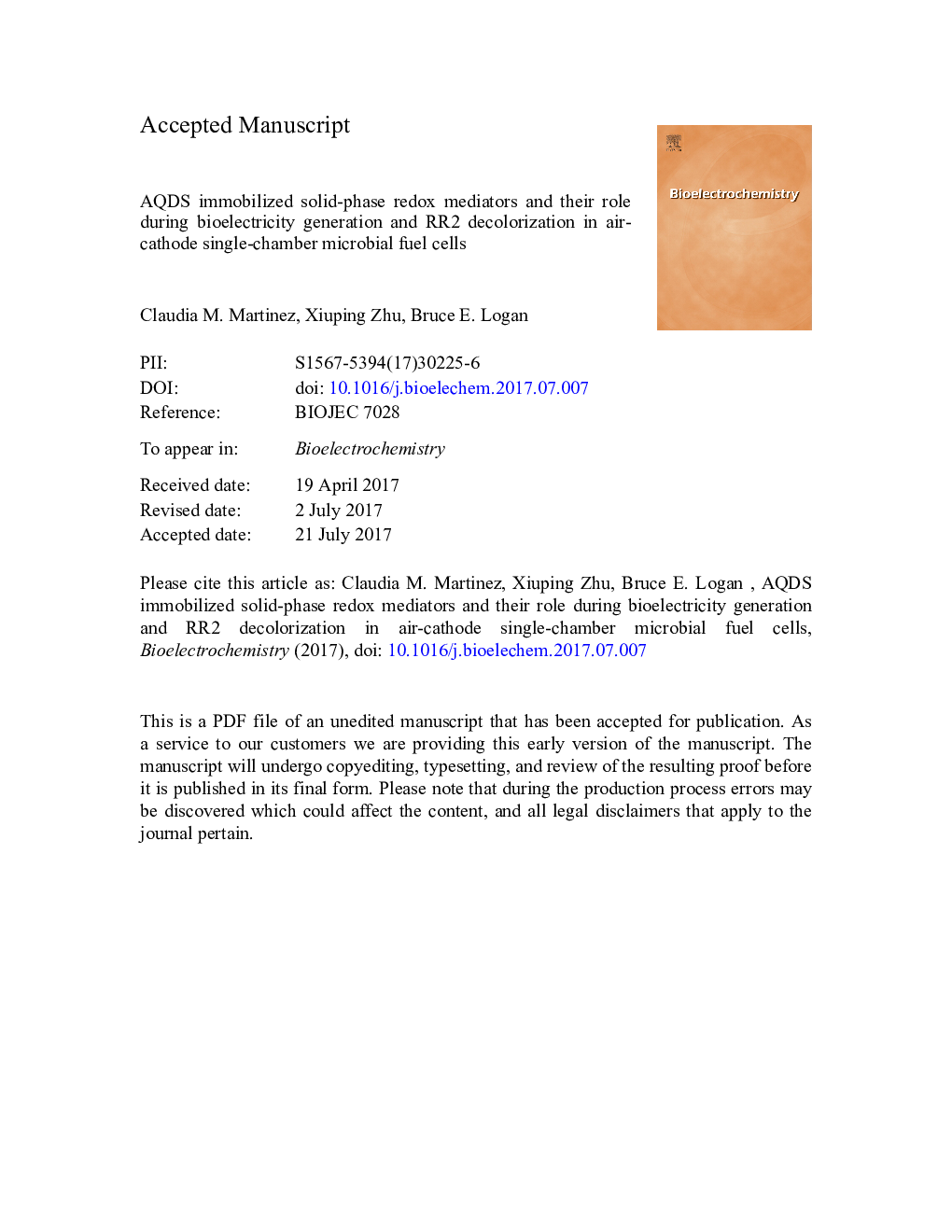| Article ID | Journal | Published Year | Pages | File Type |
|---|---|---|---|---|
| 5144985 | Bioelectrochemistry | 2017 | 26 Pages |
Abstract
The application of immobilized redox mediators (RMs) in microbial fuel cells (MFCs) is an emerging technology for electricity generation with simultaneous azo dye decolorization due to facilitated electrons transfer from bacteria to anodes and azo dyes. The use of immobilized RMs avoids the requirement of their continuous dosing in MFCs, which has been the main limitation for practical applications. Two strategies of anthraquinones-2,6-disulphonic salt (AQDS) immobilization, AQDS immobilized with polyvinyl alcohol particles and AQDS immobilized on anodes by electropolymerization, were evaluated and compared to achieve simultaneous reactive red 2 (RR2) dye reduction and bioelectricity generation. The AQDS immobilized by electropolymerization showed the highest power density (816 ± 2 mW/m2) and extent of RR2 decolorization (89 ± 0.6%). This power density is one of the highest values yet achieved in the presence of a recalcitrant pollutant, suggesting that immobilization was important for enabling current generation in the presence of RR2.
Related Topics
Physical Sciences and Engineering
Chemistry
Electrochemistry
Authors
Claudia M. Martinez, Xiuping Zhu, Bruce E. Logan,
